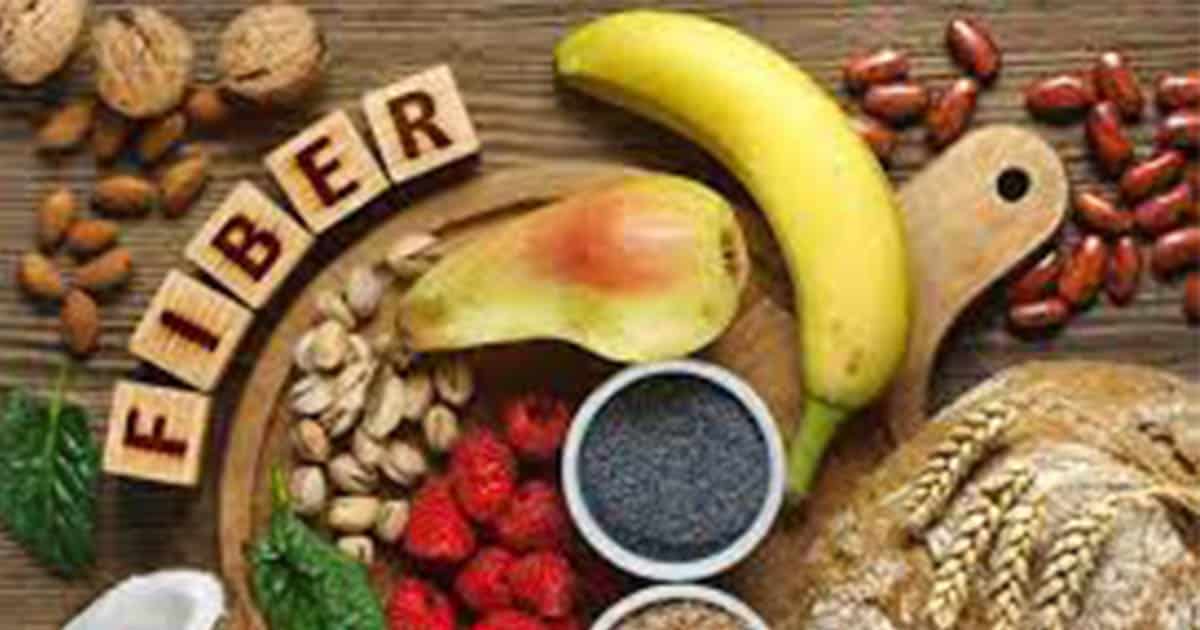Eat more fiber. It may have been mentioned to you before, but do you understand why fiber can be so essential to our wellbeing?
found mostly in organic produce, vegetables, whole grains and legumes — may be best known for its ability to prevent or lessen constipation, yet other food sources containing fiber also offer numerous health advantages; including helping maintain a healthy weight while decreasing diabetes risk factors and coronary illness risks as well as various forms of disease risk factors.
Selecting delicious food sources that provide fiber is simple. Just discover your ideal amount, discover which food sources contain it, and how you can incorporate these delicious sources into meals and snacks.
What Is Dietary Fiber ?
Dietary fiber, also referred to as roughage or bulk, refers to plant food items your body cannot process or assimilate. While your body processes other food components like fats, proteins or sugars; fiber is left alone without being processed by it and typically passes harmlessly through your stomach, small digestive tract and colon.
Fiber can either disintegrate in water or remain intact over time.
Soluble Fiber. This type of dietary fiber dissolves in water to form a gel-like substance, helping reduce cholesterol and glucose levels in the body. Common sources include oatmeal, peas, beans, apples, citrus natural products carrots grain and psyllium.
Insoluble Fiber. This form of dietary fiber works to facilitate material through your digestive tract and increase stool mass, making it useful for those suffering with blockages or irregular stools. Whole wheat flour, wheat grain, nuts, beans and vegetables such as cauliflower, green beans and potatoes are excellent sources of insoluble fiber.
- Dissolvable and insoluble fiber content varies considerably among plant foods. To optimize health benefits, consume a range of high-fiber food varieties.
Advantages Of A High-Fiber Diet
A High-Fiber Diet:
A high-fiber diet: Can help regulate defecations. Dietary fiber will increase both weight and size of stool to make passing it easier, decreasing your chances of obstruction. Furthermore, fiber may assist in setting loose, watery stools since it absorbs water while adding mass to it.
Help maintain bowel health. A high-fiber diet may reduce your risk of hemorrhoids and diverticular illness (diverticular disease). Studies have also indicated that diets rich in fiber may lower your chances of colorectal malignant growth; some fiber is actually produced within the colon itself, so researchers are currently exploring how this might play into preventing diseases of the colon.
Reducing cholesterol levels. Dissolvable fiber found in beans, oats, flaxseed and oat grain could help bring down cholesterol levels by decreasing low-thickness lipoprotein, or “bad,” cholesterol levels. Furthermore, studies have demonstrated that high-fiber food sources may have other heart-medical advantages like alleviating circulatory strain and aggravation.
Fiber can assist with controlling blood sugar levels in individuals living with diabetes. Soluble fiber in particular can slow sugar consumption and assist with maintaining steady glucose levels; additionally, eating a diet rich in insoluble fiber could potentially lower risk for type 2 diabetes.
Fiber helps people reach weight goals. Because high-fiber foods tend to be more satisfying, you might eat less and remain satisfied longer. Furthermore, high-fiber food sources tend to take longer to consume and contain fewer calories for each volume of food consumed.
Studies indicate that increasing your cereal fiber consumption may reduce cardiovascular illness risk as well as all diseases.
How Much Fiber Do You Want?
The Foundation of Medicine provides scientific-backed advice in regard to medicine and wellbeing, offering adult daily fiber suggestions:
Fiber: Day By Day Proposals For Grown-ups
| Age 50 or younger | Age 51 or older | |
| Men | 38 Grams | 30 Grams |
| Women | 25 Grams | 21 Grams |
Your Best Fiber Decisions
If you’re not getting enough fiber daily, supplementation could be the way to go. Some top picks for fiber include:
- Whole-grain products
- Fruits
- Vegetables
- Beans, peas and other legumes
- Nuts and seeds
Food varieties processed or refined during handling such as canned soil products, mash free squeezes, white breads and pastas and non-entire grain oats tend to contain lower levels of fiber content due to grain refinement processes that strip off their outer coat of wheat (reducing fiber levels) while advanced food varieties often restore some B nutrients and iron back in after handling but don’t include fiber as part of their nutritional profile.
Fiber Supplements And Strengthened Food Sources
Food varieties tend to provide more benefits than fiber supplements like Metamucil, Citrucel or Fiber Con. Food varieties provide filaments, nutrients and other valuable supplements not available through fiber supplements like Metamucil.
One way of increasing fiber intake is through food varieties like cereal, granola bars, yogurt and frozen yogurt that contain added “inulin” or “chicory root.” Some individuals report experiencing gassiness after consuming foods containing added inulin or chicory root fibers.
However, some individuals may still require fiber supplements if dietary changes alone are insufficient to manage constipation or runny or irritable bowel symptoms. Before taking fiber supplements it’s wise to speak to your primary care physician first.



